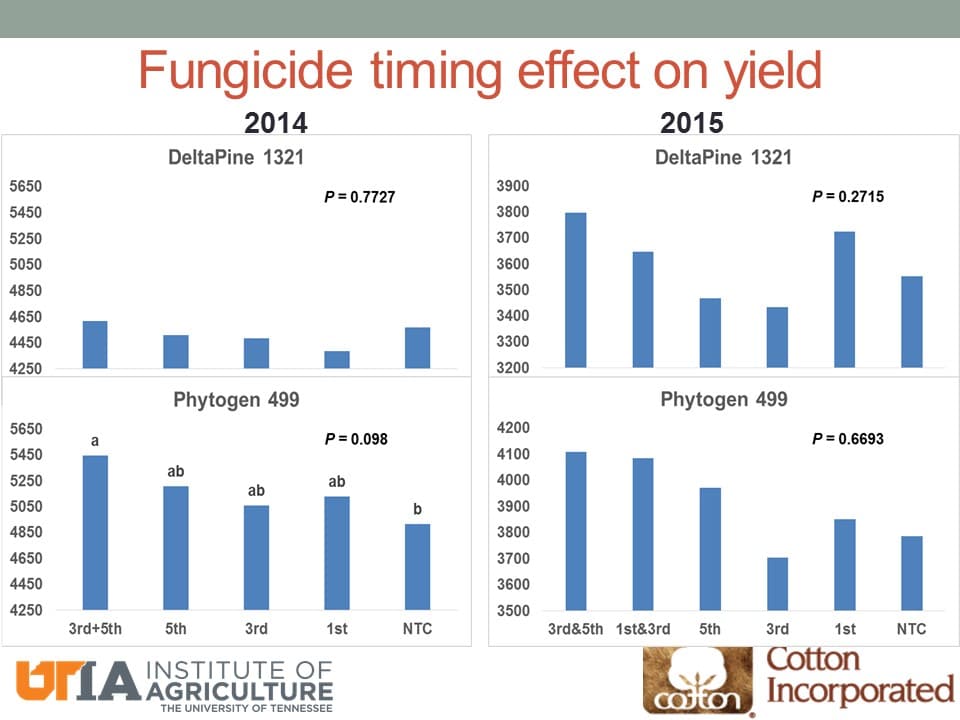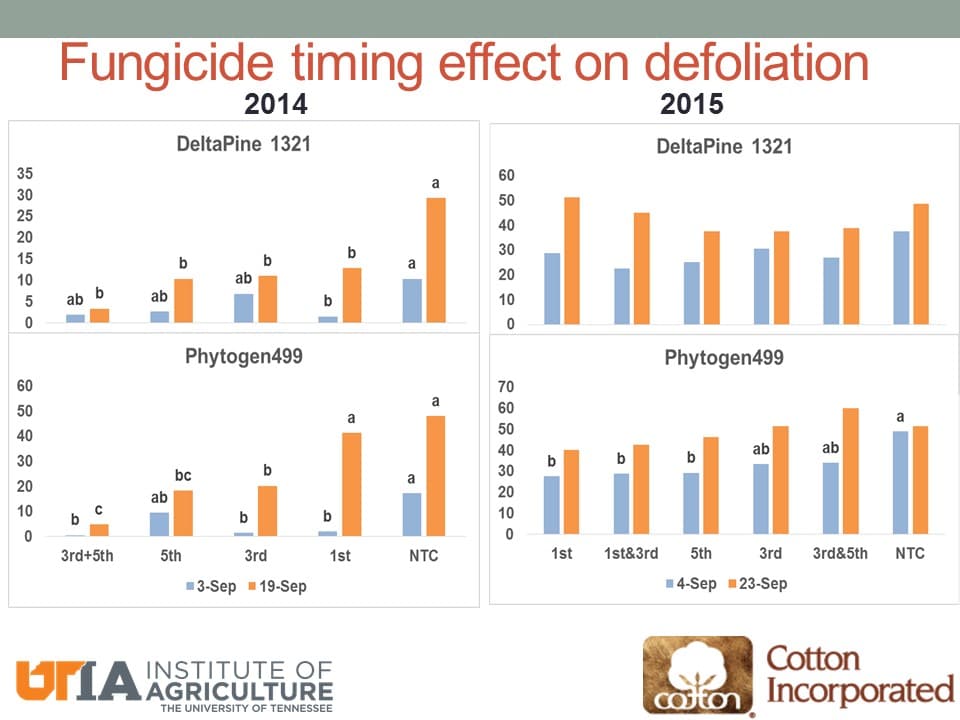Since the first report of target spot in cotton in Tennessee in 2013 it has been found in more fields and earlier in the season. This year in particular some have sprayed a fungicide to protect their cotton in Tennessee.
Target spot is a foliar disease that has a wide host range including soybean, sesame, tomato, cucumber, hydrangea, lantana, other tropical plants, and the newest host of concern is cotton. Lesions of target spot are found first in the lower canopy and have irregular concentric rings (Image 1). Lesion size and number per leaf can vary but they are commonly larger than ¼-inch in diameter and often multiple lesions occur on each infected leaf. More of concern than the lesions of target spot is the premature defoliation starting in the lower canopy that can occur rapidly from disease development in the right environmental conditions (Image 2). More information about target spot can be found at UTcrops.com and in UT Extension publication ‘Target Spot and Its Potential Impact on Tennessee Cotton (W730).’
While the disease has been problematic before 2010 in South Georgia and Alabama, the disease was first reported in Tennessee in 2013 in Madison County with disease onset occurring the beginning of September. In 2014 the disease came on earlier in the middle of August and was reported in Madison and Gibson counties and in 2015 the earliest disease onset occurred the end of July in research plots at the research station in Jackson and multiple counties were reported to have seen target spot, but later in the season. This season, at the research center in Jackson the first lesions of target spot were found the end of July again, but in other fields the disease may have been slightly earlier based on the amount of disease and defoliation that developed by first and second week of August.
While no variety resistance has been identified, the disease seems to be more severe on high yielding ground and high yielding varieties; it had been responsive to foliar fungicide applications. Fungicides labeled for application in cotton include Twinline (7 -8.5 fl oz/a), Quadris (6-9 fl oz/a), Headline (6-12 fl oz/a), and Priaxor (4-8 fl oz/a). Trials in Tennessee in 2014 and 2015 have been variable in disease control and lint protection (Graphs 1 and 2) but in general single and double applications of Headline (6 fl oz/a) at or around third week of bloom have reduced disease and defoliation and protected lint. Whether cotton would benefit from a fungicide application to protect from target spot needs to be assessed on a field by field basis. As with other diseases higher risk fields include those that are continuous cotton and irrigated. Also the effect target spot has on yield will be influenced by when the disease first develops, what growth stage the field is at, and weather conditions. Uncertainties include estimating yield loss from amount of target spot or defoliation and when is it too late to spray a fungicide. More research and information will be provide on UTcrops.com and news.utcrops.com as it becomes available on this disease and management options.
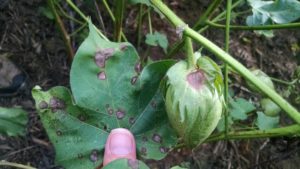
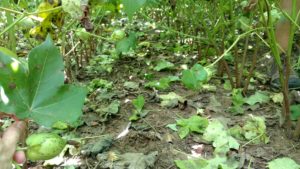
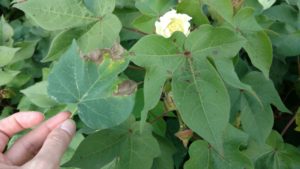
Right – other leaf spot lesions that will not respond to fungicides
